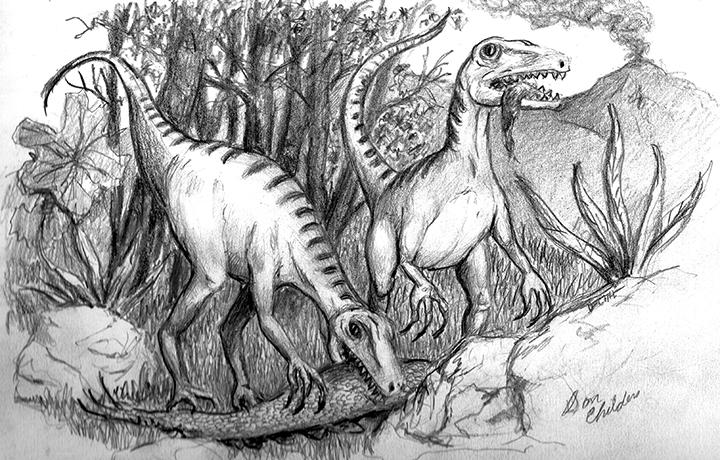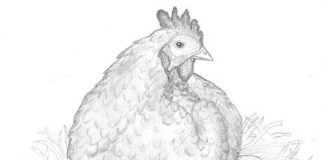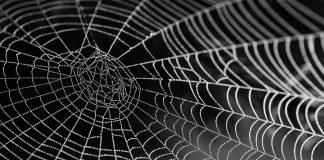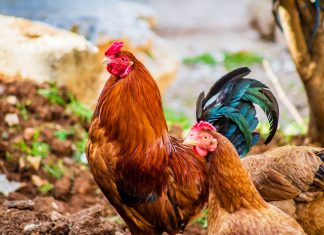By John Silveira
Do you have chickens, ducks, turkeys, or geese in your yard? They’re not “just birds” because scientists now realize birds are dinosaurs. Real dinosaurs! For 150 million years, dinosaurs walked the earth and 66 million years ago, they were supposed to have just up and disappeared. Or that’s what I was told when I was a kid.
But for more than a century an argument has raged in paleontological circles as to where birds came from. One side held they evolved from more primitive reptiles, as mammals and “real” dinosaurs had. The other side said birds came directly from dinosaurs and that they were, in fact, the last of the dinosaurs. There was some evidence the latter side was right, but not enough evidence to settle the argument.
Then, in 1995, a farmer in China found the fossil of a dinosaur and it was obvious it had had primitive feathers. Feathers had long been considered a strictly avian feature, not a feature in dinosaurs. Soon afterwards other dinosaur fossils were found that also bore evidence of feathers, and these feathers were more like the kind found on modern birds. This sent paleontologists back to examine previously-found fossils, and many of those yielded evidence of feathers that had been attached to arm bones of many theropods, a suborder of dinosaurs that includes tyrannosaurs, velociraptors, and now birds.
It was evidence that had previously been overlooked. We now know that hundreds, if not thousands, of dinosaur species had feathers and it is finally clear that birds didn’t just evolve from dinosaurs, they are dinosaurs.
But to which line of dinosaurs do birds belong? The latest theories, backed by fossil evidence, point to what are called maniraptoran theropods, most of which were small meat-eating dinosaurs that included the carnivorous velociraptors. (Remember the nasty velociraptors depicted in the movie, Jurassic Park, with scaly skin?) Yeah, they were related to those hens you have in your backyard. Then, in 2007, collagen proteins were extracted from inside the fossilized bones of a Tyrannosaurus rex. The proteins were analyzed and they showed it’s birds (not lizards, snakes, and other reptiles) that are the closest living relatives of dinosaurs. And like birds, it’s now believed that at least some other dinosaurs were warm-blooded, including the velociraptors and maybe even the T. rex.

Birds’ teeth
Here’s something most people don’t know: birds used to have teeth. They lost them just over 100 million years ago. Why is this important? Nature doesn’t usually throw genes out, she just “turns them off.” So it was thought that chickens (and other birds) may still carry the genes to grow teeth and scientists at the University of Wisconsin have manipulated the genes in some domestic chickens hoping to make them grow teeth again. And they did! The teeth they grew are cone-shaped, more like crocodilian teeth than they are like mammalian teeth, which is not surprising because birds are more closely related to these reptiles than they are to mammals. They may well be the first birds to have teeth in 100 million years.
How widespread are today’s dinosaurs?
There are 5,416 species of mammals, but there are somewhere between 9,000 and 10,000 species of birds (dinosaurs). That is, there are almost twice as many kinds of birds as mammals. It says something about the resiliency of these ancient animals. And today, birds can be found on every continent.
The most common dinosaur in the world today is the domestic chicken, which is descended from the wild red junglefowl. This bird was first domesticated in Southeast Asia and though there aren’t too many real red junglefowls left in the wild, there are an estimated 27.5 billion chickens. (Some estimates place the number as high as 50 billion.) That’s almost four chickens for every man, woman, and child on the planet.
By comparison, the most common wild dinosaur (bird) is the Red-billed quelea, a small African bird, of which there are an estimated 1.5 billion. But the most common wild dinosaur Americans are familiar with is probably the House sparrow. They didn’t originate here, but were brought to the Americas by Europeans. Current estimates are that there are 540 million of them around the world.
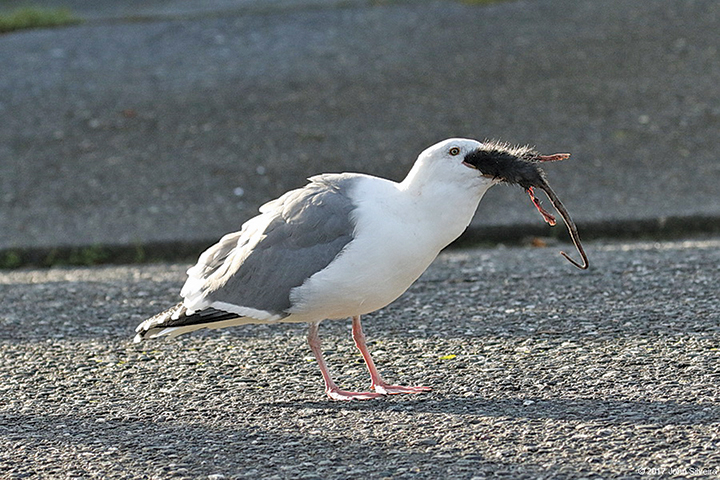
Terror birds
After the Cretaceous extinction event, in which all the other lines of dinosaurs disappeared some 66 million years ago, mammals rose to become the top predators on all continents except South America, which had broken away from Africa long before the extinction happened. While land animals seemed to migrate back and forth among Asia, Europe, Africa, and North America, South America remained isolated.
So, from about 62 million to 1.8 million years ago, the apex predators in South America were birds scientists call Phorusrhacids, but which are colloquially known as “Terror Birds.” They filled the niche previously filled by other carnivorous dinosaurs and which today are filled by the big cats, wolves, and bears the world over. The largest of these terror birds, the Brontornis burmeisteri, grew to almost 10 feet tall and weighed as much as 1,100 pounds. They had the largest head of any bird that ever lived, huge hooked-beaks (like an eagle’s) that were as much as 1½ feet long, and huge talons on their feet. Guesses are that they could run 30 mph, but researchers still don’t know whether they were pack hunters, like lions and wolves are today (and like prehistoric velociraptors, made famous by the movie, Jurassic Park, apparently were), or if they were solitary hunters like tigers and leopards. Whatever their behavior, they must have been terrifying.
But their reign as the South American apex predator ended just about the time North and South America began their collision where the Isthmus of Panama is today. With this new land bridge, there followed an exchange of species between the two continents with terror birds and some other animals migrating north, while mammalian predators and other animals that had evolved in North America migrated south. Because of these migrations, terror bird fossils can be found in Texas and Florida.
But, ultimately, this didn’t work out for the terror birds as they became extinct and were replaced by the mammalian predators.
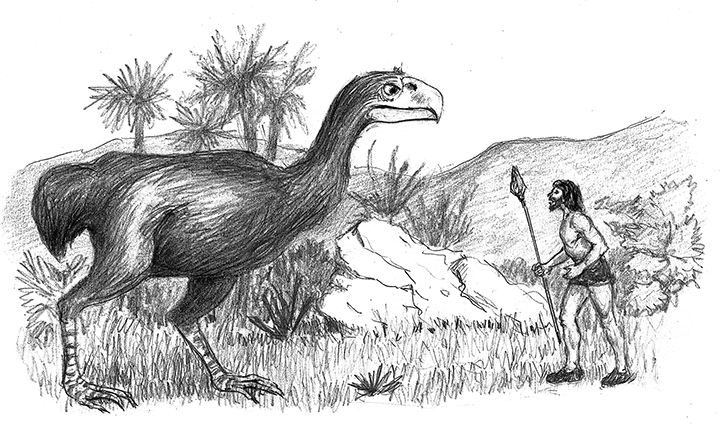
Are there other dinosaurs wrapped up in the birds?
I leave with a final question. If scientists can unlock the “turned off” genes to grow back teeth in a bird, is it possible that, someday, they may be able to unravel enough of a chicken’s (or some other bird’s) DNA to reconstruct a prehistoric dinosaur? One from which the birds descended, namely, a velociraptor-like animal? Or could they even find hidden in their DNA another therapod that’s something like a T. rex? The science of genetics is still young, so stay tuned, because you can bet there’s going to come a time when someone’s going to try.
Watch these birds in action:
Prehistoric terror birds:
www.youtube.com/watch?v=OQVcpmDamkA
Heron fishing:
www.youtube.com/watch?v=GUPtAFtotCk
Osprey fishing:
www.youtube.com/watch?v=nA3LtXnNIto
Eagle and goat:
www.youtube.com/watch?v=VklTs-Tid_I
www.youtube.com/watch?v=a8vXrUEs8wk


